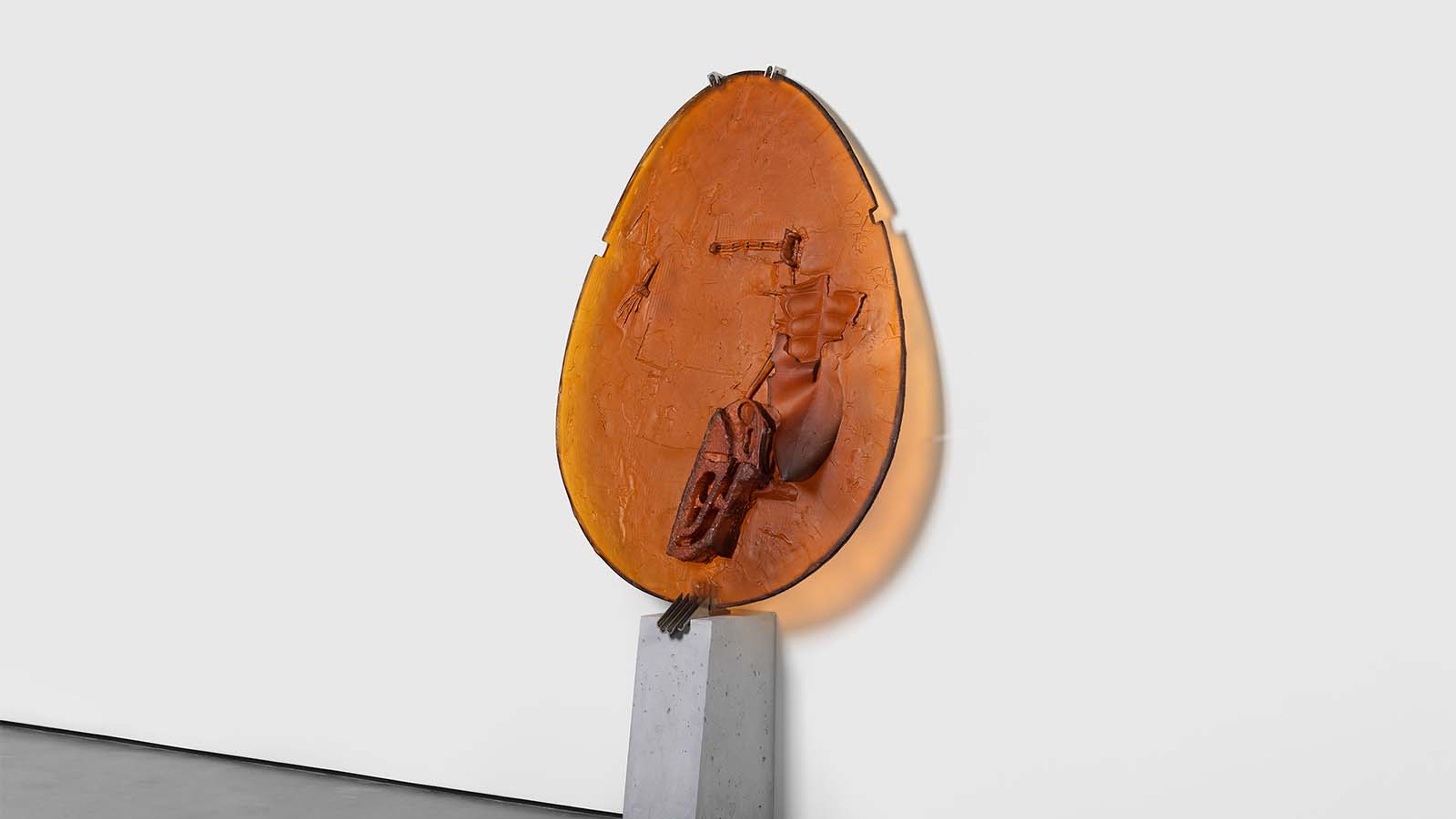The Romanian artist Andra Ursuța’s new show at David Zwirner gallery, “Retina Turner,” consists of 16 large ovoid slabs of cast glass — her Private Dancers. Each encases a spectral, half-formed figure that appears to be partially submerged beneath the sculpture’s surface: a skeleton hand, a spinal column, other remnants. They are like fossils of an alien species, artifacts of a civilization that died mid-sentence amid some volcanic catastrophe. They represent a double exposure of loss and endurance, strange archaeology and cold prophecy.
The various lineages of Ursuța’s work are unmistakable. She has taken the oval format from Lucio Fontana’s egg-shaped paintings, and, like Fontana, she shares the urge to turn the oval into a portal, a cosmic slit — but while Fontana gestured toward infinity, Ursuța seems overwhelmed by historical fatigue. Like H.R. Giger, Ursuța engineers an anti-heroic vocabulary in which ornament functions as wound and polished surfaces feel diseased. Like Matthew Barney, she treats myth as theater, each object a prop in a play without a script. And like her Zwirner stablemate Huma Bhabha, she builds hulking figures out of rubble and refuse — monumental yet grotesque and alive. The difference is that Ursuța’s slabs insist on fragility. The glass might shatter.
